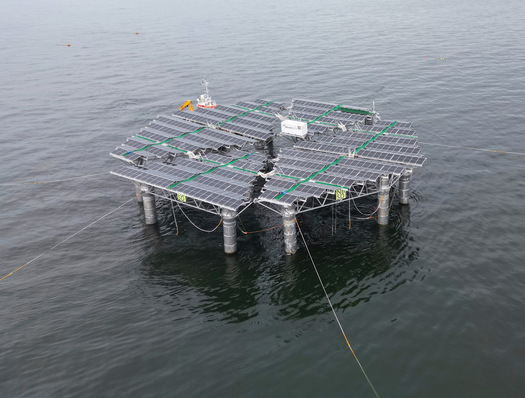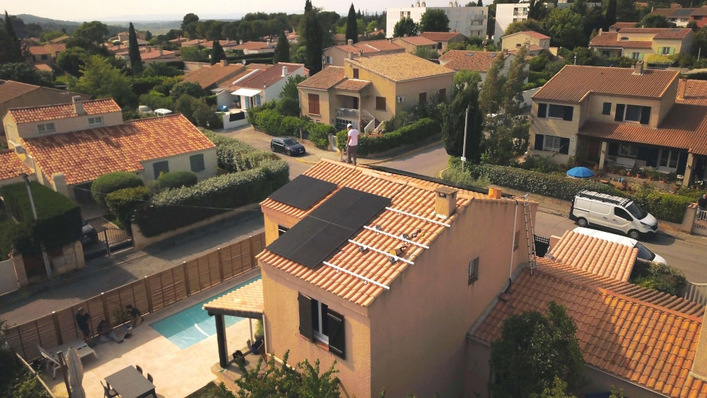A few days ago, Siemens, the Allgäuer Überlandwerk (AÜW – a regional utility in southern Germany) and some local partners launched the pebbles electricity trading platform, bringing them one step closer to creating the first local marketplace for optimized electricity trading based on blockchain. The platform will be utilized in in the town of Wildpoldsried in the Bavarian Allgäu region of Germany. Now, during the platform’s demonstration phase, private producers can use an app to market their electricity directly to local consumers without going through marketers or traditional grid operators. The market platform also supports flexible power from battery storage or controllable loads such as heat pumps or charging stations for electric vehicles. The blockchain technology, which forms the basis for managing market transactions, is designed to create end-to-end transparency and trust between users.
Consumers – also the customers – can define preferences for electricity purchases, such as the percentage and price for electricity from local photovoltaic and wind energy systems. With funding from the German Federal Ministry for Economic Affairs and Energy, the goal of the pebbles project is to demonstrate that bottlenecks in the grid can be avoided through local energy and flexibility trading, therefore lowering the costs associated with the energy transition.
Optimise the local energy trade
Commenting on the launch, Andreas Feicht, State Secretary at the German Federal Ministry for Economic Affairs and Energy, said: “The pebbles project is impressive proof of how different stakeholders from science, industry and the public sector can work together on an innovative solution. This makes a vital contribution to the government’s energy and digital policy goals as well as to the energy transition in the Allgäu region.”
Sabine Erlinghagen, CEO of Digital Grid at Siemens Smart Infrastructure, said: “The digital platform used for pebbles connects producers, consumers and storage facilities so they can optimize the way they locally trade energy and flexibility with each other. This allows systems generating power from renewable energy sources to remain economically attractive after government subsidies run out and continue to produce CO2-free power and feed it into the grid in a way that benefits the entire system.”
Smart multi-dimensional models
Michael Lucke, CEO of Allgäuer Überlandwerk, added: “As a regional energy supplier, we have been involved for years in numerous projects for the future of local energy. We don’t wait for solutions; we develop them. When asked why as an electricity supplier we’re developing a platform that would make us ‘superfluous’ in the electricity trade, I happily answer: ‘If we don't do it, somebody else will, because the market demands it’. We would rather act as an innovative platform operator that supports the energy transition than stay out of the game.”
See also:
10 trends in smart PV for 2025
The electricity market is currently undergoing a radical transformation. The ways we produce, consume, store and share electricity are changing fundamentally. One-dimensional energy systems where suppliers transfer energy to passive objects are being superseded by smart multi-dimensional models where previously-passive consumers become active consumers or even producers. With the aid of controllable loads or energy storage devices, they can also inject flexibility to balance fluctuations in electricity generation. The path to decarbonisation chosen by the German Federal Government requires a continued increase in the percentage of electricity from distributed producers. With the conversion to e-mobility and heat pumps, the number of electrical consumers and the demand for electricity will increase at the same time. These changes can cause temporary bottlenecks in the power grid as well as power fluctuations that need to be addressed.
Real alternative to expensive grid expansions
This necessitates intensive expansion at certain points in the distribution grid, which is associated with high costs. Innovative projects, such as pebbles, show grid operators real alternatives to cost and time-intensive expansion of the grid. At the same time, they meet the requests of end users for a more active role in the energy system.
Project partners Siemens, AÜW, grid operator AllgäuNetz, Kempten University of Applied Sciences, and the Fraunhofer Institute for Applied Information Technology (FIT) have jointly developed the platform, management systems and app, taking grid limitations, and production and load forecasts into account. (mfo)







